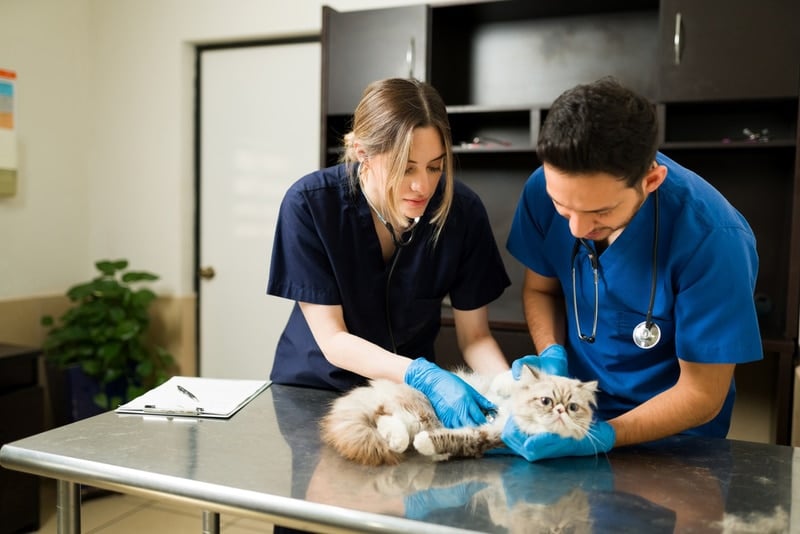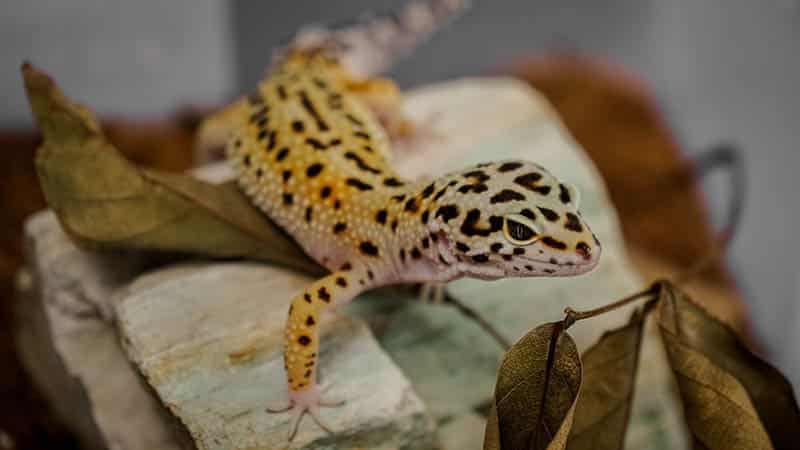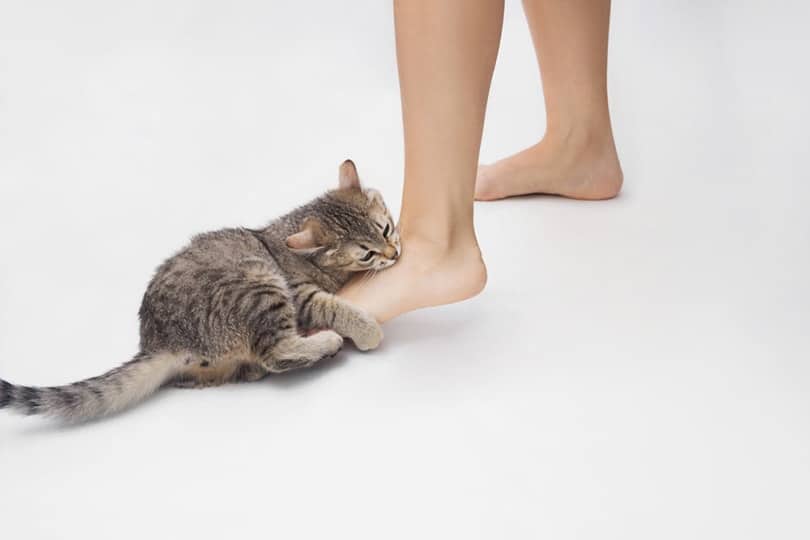Geckos are not venomous or poisonous to cats and dogs, but they can carry a liver fluke, the trematode parasite Platynosomum fastosum, which can potentially cause serious illness. The condition that it causes is sometimes called “lizard poisoning.” Read on to learn the signs of liver fluke infection and how to keep your cat safe.

Liver Fluke Infection in Cats
The adult liver fluke lives in the bile ducts of adult cats but flukes have complicated life cycles and need two intermediate hosts before they reach their infective stage in cats. The first are snails who eat the eggs, and the second are lizards and geckos. If your cat consumes an infected lizard, then your cat will contract the parasite. If your cat becomes infected, the fluke will travel to the bile tract and liver, which is where the problem lies.
Cats living in Florida, Hawaii, and other subtropical areas are at most risk for contracted liver fluke. Outdoor cats are more at risk than indoor cats, but lizards can enter homes, infecting an indoor cat if they eat it.

Signs of Liver Fluke Infection
If your cat eats a gecko, the first step is to call your vet. If you live in a subtropical climate, it’s wise to monitor your cat for signs of the parasite infection in case they ate one and you didn’t see it. While many cats remain asymptomatic, signs can include the following:
- Vomiting
- Loss of appetite
- Diarrhea with mucus
- Severe weight loss
- Jaundice
- Distended abdomen
- Enlarged liver
- Fever
- Generalized disability
If your pet is showing these signs, we suggest you speak to a vet.
If you need to speak with a vet but can't get to one, head over to PangoVet. It's an online service where you can talk to a vet online and get the advice you need for your pet — all at an affordable price!

What Treatment Is Available for Liver Fluke?
Your veterinarian will administer treatment depending on the severity of the illness. The sooner a cat can be treated, the better, as severe cases that have developed liver failure can unfortunately have a guarded prognosis. Treatment with the anthelmintic praziquantel may be given 1. Cats may also need to be hospitalized for supportive care including intravenous fluid therapy, and other medication may be needed depending on the severity of disease, such as antibiotics and vitamin supplementation.
Your veterinarian will likely continue to monitor your cat’s liver enzymes and fecal matter. With appropriate treatment and time, most cats make a full recovery as long as the parasite is caught in time and no severe damage has been done to the liver and gallbladder.

How to Keep Your Cat Safe From Liver Fluke Infection
If you have an indoor cat, limit access to outside as much as possible, especially if you live in a subtropical climate. If you have an outdoor cat, speak to your vet about appropriate preventative medication that can be given regularly in tropical climates.
Inspect outdoor areas for cracks, holes, and crevices, such as patios and porches. Placing protective mesh in areas where lizards can easily access will help prevent them from entering your home.

Conclusion
While geckos are not poisonous or venomous, they still can carry liver fluke. Not all geckos will be infected with the parasite, but there’s no way to tell just by looking at the gecko. Most cats make a full recovery as long as the infection is caught in time; however, if left untreated, your cat can become severely ill and die from the infection. Contact your vet if you know they have eaten a gecko, and be aware of the signs of liver fluke infection so it can be picked up and treated as quickly as possible.
Featured Photo Credit: verdian chua. Unsplash










